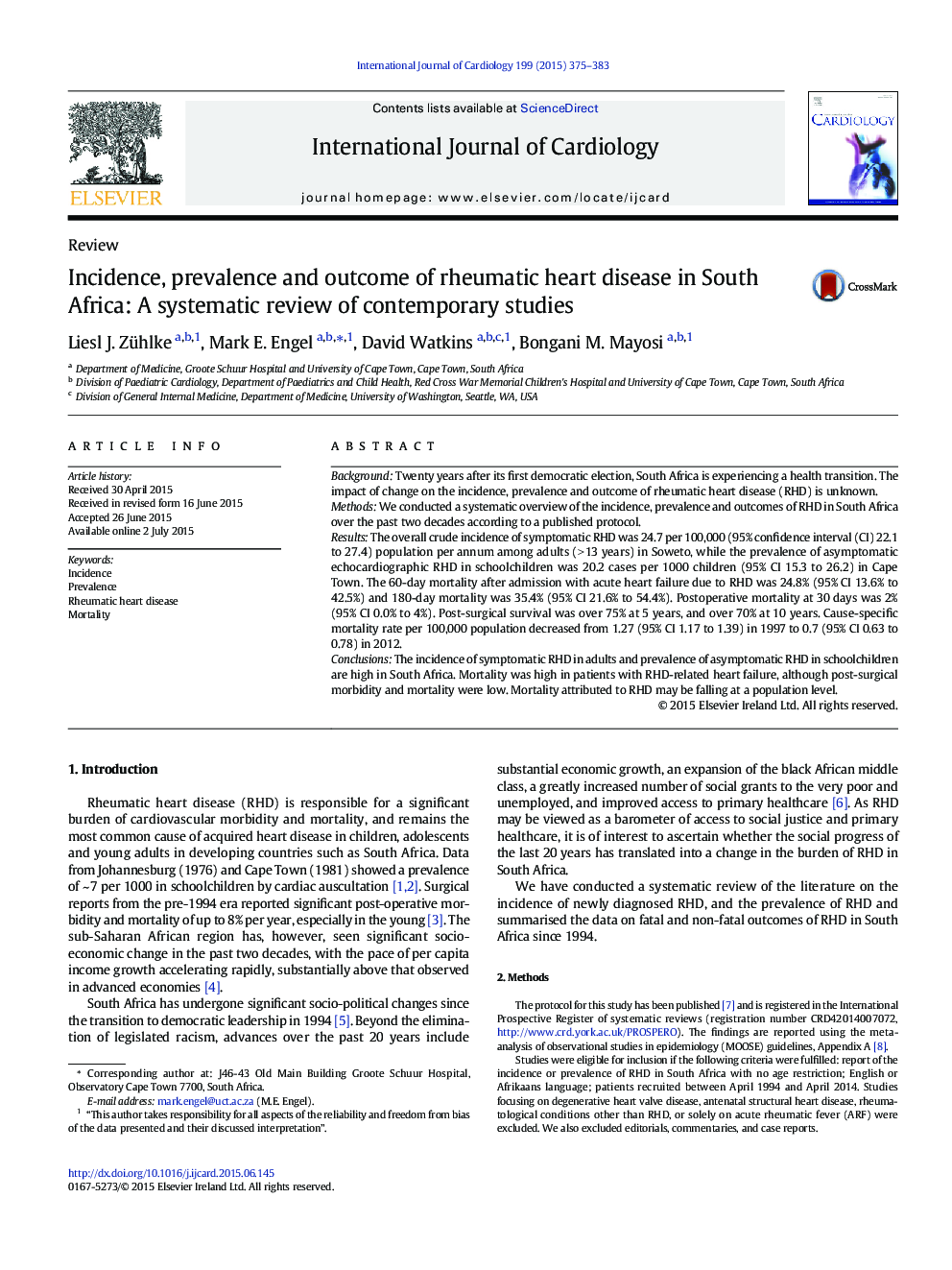| Article ID | Journal | Published Year | Pages | File Type |
|---|---|---|---|---|
| 5965822 | International Journal of Cardiology | 2015 | 9 Pages |
â¢The incidence and prevalence of RHD remain high in South Africa.â¢Acute heart failure due to RHD is associated with a high case fatality rate.â¢Cause-specific mortality rates have decreased over the past 13 years.
BackgroundTwenty years after its first democratic election, South Africa is experiencing a health transition. The impact of change on the incidence, prevalence and outcome of rheumatic heart disease (RHD) is unknown.MethodsWe conducted a systematic overview of the incidence, prevalence and outcomes of RHD in South Africa over the past two decades according to a published protocol.ResultsThe overall crude incidence of symptomatic RHD was 24.7 per 100,000 (95% confidence interval (CI) 22.1 to 27.4) population per annum among adults (>Â 13Â years) in Soweto, while the prevalence of asymptomatic echocardiographic RHD in schoolchildren was 20.2 cases per 1000 children (95% CI 15.3 to 26.2) in Cape Town. The 60-day mortality after admission with acute heart failure due to RHD was 24.8% (95% CI 13.6% to 42.5%) and 180-day mortality was 35.4% (95% CI 21.6% to 54.4%). Postoperative mortality at 30Â days was 2% (95% CI 0.0% to 4%). Post-surgical survival was over 75% at 5Â years, and over 70% at 10Â years. Cause-specific mortality rate per 100,000 population decreased from 1.27 (95% CI 1.17 to 1.39) in 1997 to 0.7 (95% CI 0.63 to 0.78) in 2012.ConclusionsThe incidence of symptomatic RHD in adults and prevalence of asymptomatic RHD in schoolchildren are high in South Africa. Mortality was high in patients with RHD-related heart failure, although post-surgical morbidity and mortality were low. Mortality attributed to RHD may be falling at a population level.
